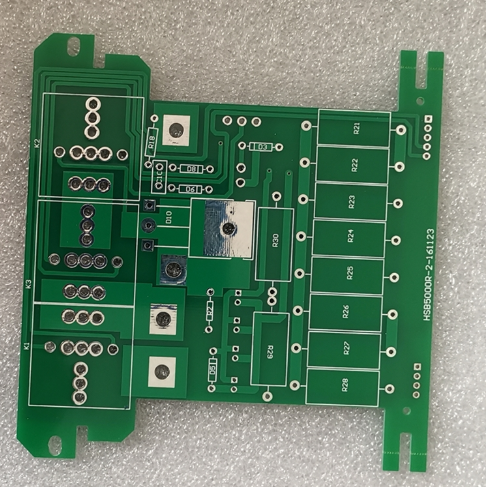First of all SMT production equipment such as Lifeng reflow soldering, Lifeng wave soldering, Lifeng solder paste printer and paste
All installations must be well grounded, and the SMT workshop should adopt a three-phase five-wire grounding method and be grounded independently. The ground, work surface pads, seats, etc. of the production site shall all meet the anti-static requirements. Maintain a constant temperature and humidity environment in the workshop. It should be equipped with anti-static material boxes, turnover boxes, PCB racks, logistics carts, anti-static packaging belts, anti-static wrist straps, anti-static soldering irons and tools.
(1) Set up anti-static area according to anti-static requirements, and have obvious anti-static warning signs. According to the electrostatic sensitivity of the devices used in the work area, it is divided into 1, 2, and 3 levels, and different protective measures are formulated according to different levels.
Level 1 electrostatic sensitivity range: 0-1999V Level 2 electrostatic sensitivity range: 2000-3999V Level 3 electrostatic sensitivity range: 4000-15999V Above 16000V are non-static sensitive products.

(2) The room temperature of the electrostatic safety zone (point) is 23±3 degree Celsius, and the relative humidity is 45-70%RH. It is forbidden to operate SSD (electrostatic sensitive components) in an environment less than 30%. (3) Regularly measure the surface resistance of the ground, desktop, turnover box, etc.
(4) Non-production items, such as tableware, tea sets, handbags, woolen fabrics, newspapers, rubber gloves, etc., are not allowed to be placed on the workbench in the electrostatic safety zone (point).
(5) Workers need to discharge when entering the anti-static area. Operators must wear work clothes and anti-static shoes and socks when performing operations. Electrostatic protection safety inspection must be done before each on-the-job operation, and production can only be done after passing the test.
(6) Wear an anti-static wrist strap during operation, and measure whether the wrist strap is effective every day.
(7) When testing SSD, one should be taken from the packaging box, tube, and plate, one should be tested, and one should be put on the table. The unqualified devices shall be returned to the library after testing.
(8) The power-on and power-off sequence must be followed during the power-on test: low voltage - high voltage - signal voltage. The outgoing sequence is reversed. At the same time, note that the polarity of the power supply cannot be reversed, and the power supply voltage must not exceed the rated value.
(9) Inspectors should be familiar with SSD models, varieties, test knowledge, and basic knowledge of electrostatic protection.
10. Electrostatic sensitive components (SSD) transportation, storage, and use requirements
(1) The SSD must not be dropped to the ground during transportation, and must not be arbitrarily separated from the packaging.
(2) The relative humidity of the warehouse where the SSD is stored: 30-40%RH.
(3) Keep the original packaging during SSD storage. If you need to change the packaging, use an anti-static container.
(4) In the warehouse, a special anti-static label should be affixed to the place where the SSD device is placed.
(5) Visual inspection should be used when distributing SSD devices, and the quantity should be counted in the original packaging of SSD devices.
(6) When writing, erasing and information protection operations on EPROM, the writer/eraser should be fully grounded, and an anti-static bracelet should be worn.
(7) The operators of PCB assembly, welding, repairing, debugging, etc. must operate strictly in accordance with the requirements of electrostatic protection.
(8) The PCB printed circuit boards that have passed the test and inspection are sprayed once with an ion spray gun before packaging to eliminate the static charge that may accumulate.
11. Management and maintenance of anti-static work area
(1) Formulate an anti-static management system, and have a dedicated person responsible.
(2) Spare anti-static overalls, shoes, bracelets and other personal items for use by outsiders.
(3) Regularly maintain and check the effectiveness of anti-static facilities.
(4) Check the wristband once a week (or every day).
(5) Check the grounding of table mats and floor mats, and the performance of static eliminators once a month.
(6) Anti-static component racks, printed board racks, turnover boxes; anti-static performance of transport vehicles, table mats, and floor mats are inspected every six months.